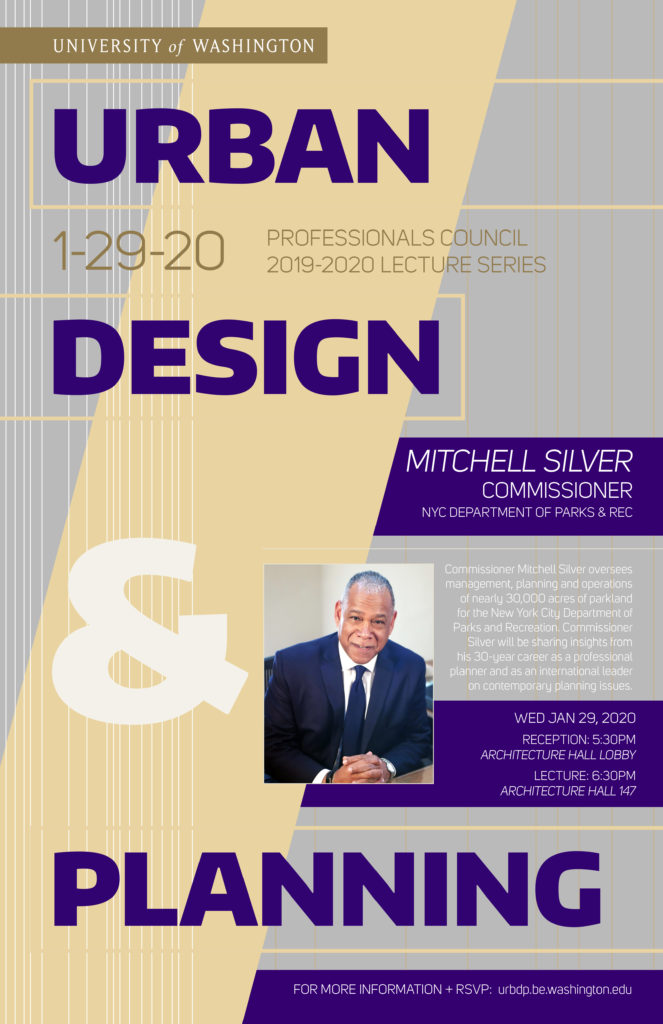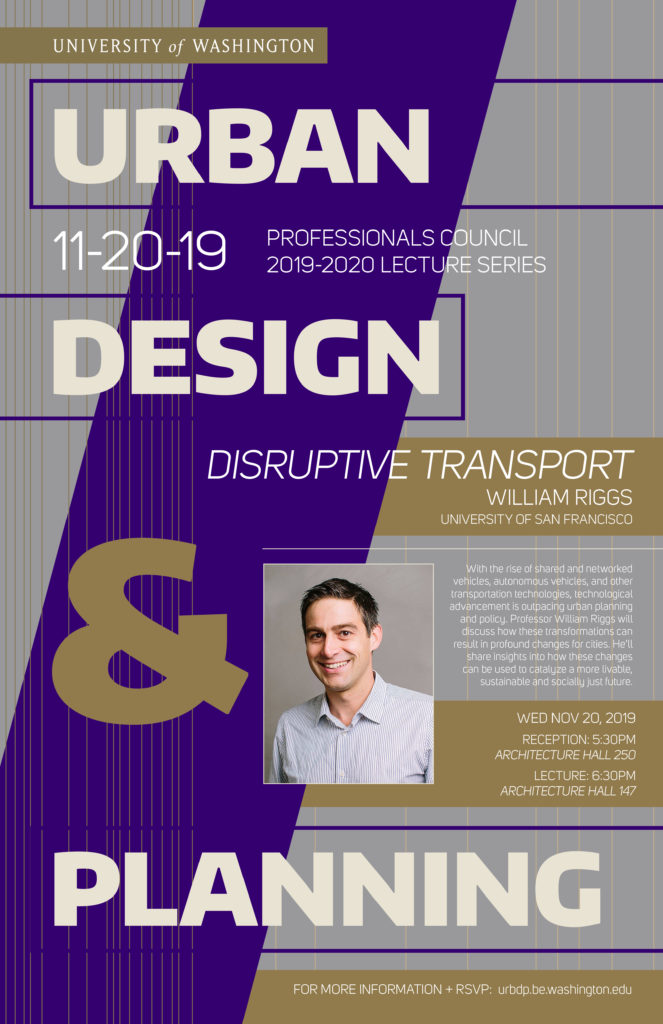UDP professions council fall lecture with Gil Kelley
Himanshu Grover | Community Resilience Handbook for Disaster Preparedness and Management
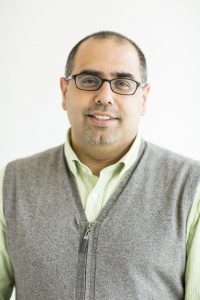
Dr. Himanshu Grover’s research lands at the intersection of land use planning, community resilience, and climate change. Dr. Grover is also the co-Director of the Institute for Hazard Mitigation and Planning at the College of Built Environments. His research emphasizes place-based planning policies to balance economic, environmental, and social priorities to achieve equitable development and enhance community resilience.
“The same amount of money that you spent, let’s say, for building your capacity to provide a specific kind of risk communication through your social media platform, can be used for floods, for earthquakes, for terrorist attacks or for epidemics.”
In 2019, America with Kerala: Uniting for a Disaster Resilient Kerala, a joint project organized by the U.S. Consulate General in Chennai, the Centre for Public Policy Research (CPPR) in Kochi, and the Kerala State Disaster Management Authority (KSDMA) took place in response to disastrous floods and landslides that devastated Kerala, India. Dr. Grover participated in the project serving as the U.S. subject matter expert. He delivered the keynote address in which he shared the American experience in disaster management, and how it can inform Disaster Management in India. One of his key messages was to adopt an “All Hazards Approach” as a framework for risk reduction. Additionally, he highlighted the need for knowledge building and training at all levels to increase awareness about local hazard threats.
One product of the project was a community resilience resource guide for disaster preparedness that was released late fall of 2020. The guide includes input from community leaders who led disaster response efforts during the 2018 and 2019 floods and landslides in Kerala, as well as U.S. and Indian subject matter experts and other expert sources.
Following the launch of the community resilience handbook, Dr. Himanshu Grover also participated as an expert panelist by the US Consulate in Chennai. This online event had an attendance of more than 500 people internationally. The November 2020 panel, moderated by Dr. D. Dhanuraj, CPPR Chairman, included speakers Dr. Muralee Thummarukudy, Chief of Disaster Risk Reduction, United Nations Environment Programme (UNEP); Dr. Himanshu Grover, co-director, Institute for Hazard Mitigation and Planning, College of Built Environments, University of Washington; Dr. Nivedita P. Haran, IAS (Retired), Honorary Chairperson, Board of Directors, Centre for Migration and Inclusive Development, Kerala; and Dr. Shekhar L. Kuriakose, Member Secretary, Kerala State Disaster Management Authority.
As a follow-up to the 2019 initiative, U.S. State Department, through U.S. Consulate General in Chennai, asked Dr. Grover to develop a Disaster Management Curriculum for a new, 40-hour elective course to be incorporated into existing academic programs in universities, autonomous colleges, and other relevant governmental and non-governmental agencies across India. After developing the curriculum, Dr. Grover will visit India on a speaking tour to promote the curriculum among relevant institutions. This American/internationally approved curriculum will help develop regional expertise in disaster management; promote academic collaboration between Indian and U.S. institutions in this area and highlight opportunities to attract students and practitioners across India to seek higher studies in this field in the United States. Dr. Grover anticipates that his initiative will establish the College of Built Environments as a leader in disaster management education. He hopes this collaboration will result in establishing partnerships with reputed Indian educational institutions and professional bodies which will lead to increased opportunities for student recruitment as well as placements for our graduates.
Robert Freitag | Story Telling
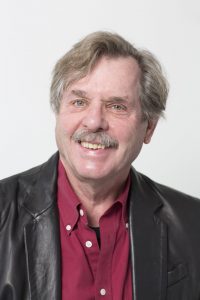
Bob Freitag is actively involved in exploring how storytelling can help communities address difficult emotionally charged topics. Opportunities available through storytelling is described in a published in the Story telling Freitag et al JEM. He published a follow up article that actually tells a story, “showings” how threaten community residents address climate change. Bob is currently write a screen play, again showing, how a participate let process using storytelling.
ABSTRACT
Almost everyone can relate to the experience of telling a story. This article explores how storytelling is being used to identify risks and create hazard mitigation strategies, as well as how it can promote learning within the field of emergency management. Storytelling is both a pedagogical tool and an invaluable resource for practicing emergency managers. This article illustrates the ways in which the process of telling a story enables participates to talk about stressful concerns, internalize complex concepts, and even have fun. The article explores how storytelling drove the public process leading to the adoption of hazard mitigation plans, and how eight types of stories, as defined by the American humorist Kurt Vonnegut, can strengthen emergency management education. This article also explores how research suggests that storytelling can provide an effective way for both the tellers of story and their listeners to find meaning in events, provide context to what is being taught, transmit emotion along with information, develop a professional identity, build empathy and compassion, and help with remembering events and lessons learned. The authors have a long history of utilizing storytelling and present this article in order to share and explore storytelling as applied to the discipline of emergency management.
Dan Abramson | Lessons Learned from Post-2008 Wenchuan Earthquake Community Recovery
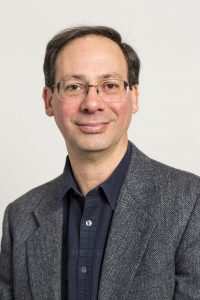
Dr. Dan Abramson co- edited a Special Issue of Natural Hazards (Springer): Lessons Learned from post-2008 Wenchuan Earthquake Community Recovery
“In it, we sought to highlight recent scholarship that reflects on the quality of community-level recovery and community planning processes following one of the largest natural disasters in modern times, which significantly affected one of the world’s great economies. During the first few years following the earthquake, most of the scholarship tended to be descriptive, emphasizing the process of rapid physical reconstruction. In subsequent years, more thoughtful scholarship has begun to emerge regarding community aspects of the recovery process, but little of this has been available to international audiences. This collection of papers is our attempt to help address this need.” – Rob Olshansky
Alumni Profile: Steven C. Smith
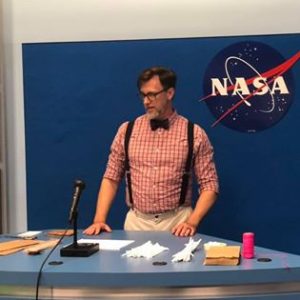
Erika Harris, Director for Marketing & Communications, sat down with Master of Infrastructure Planning & Management (MIPM) Alumni, Steven C. Smith, to find out what he’s been up to since graduating.
Let’s jump in. What’s your name, position, and title?
S: I’m Steven C. Smith. I use my middle initial because I’m so generic and there are 13 Steven Smiths who work at NASA. My title is NASA STEM EPDC education specialist.
Can you tell us what your title means?
S: My job is to amplify all of the things that are going on at NASA. One thing we do is create resources for students and teachers. We have a Crew-1 launch coming up with our commercial crew partners, SpaceX and Boeing. Our first official mission launch will happen with four astronauts flying to the space station. My job is to talk about this and create things like mission toolkits that teachers can use. We create things like engineering design challenges, which is where my background in MIPM comes in. I can systematically think about those things and create activities like lunar habitat challenges.
What led you to this job with NASA?
S: My background is as a teacher and in academics. I’ve done a lot of different things. I have a certificate in paralegal studies, an associate degree in education, a bachelor’s degree in neuropsychology with a minor in art, and the MIPM degree. I was in the military when I was very young and when I got out I didn’t know what to do. I ended up landing in education and n some way shape, or form, I’ve been an educator since 1997. I went to a conference while I was teaching. There was a NASA representative there who was sharing some of the wonderful things you could do if you had things like robots in your classroom.
My question to him was, “what if you aren’t 100% sure that you’re going to have textbooks?” So, he and I had a conversation and I ended up talking to the person who is now my boss, at Texas State University. I applied for a couple of positions there and the group that I work with ended up creating a position to pull me in. I was working for NASA through Texas State for a year when a position opened up at Johnson Space Center. I switched over there and have been working out of the Johnson Space Center right with all the astronauts for three years now. I still collaborate through Texas State University, but get to go all over the country and share the experiences I have working with low-income schools, with teachers. I have the privilege of getting to work in diverse communities and predominantly African American schools.
Even as I thought about doing something else, I kept landing back in education positions and it’s ended up being the thing I love very most in the whole wide world. That along with my MIPM background comes together in this one amazing thing that I get to do for a living.
What was your focus in the MIPM program?
S: The thing I focused on was food and sustainable food infrastructure. I did a paper with Barbara Endicott-Popovsky that was all about rethinking communities and creating these self-sustaining small communities. I ended up working with a group called Atlanta Food and Farm who works in urban agriculture to help improve food security in local communities, especially in areas with lower incomes. I eventually ended up back teaching biology and bringing those ideas and thoughts with me in the curriculum.
What’s something about NASA that not everyone knows?
S: NASA prides itself on its efforts in diversity and inclusion. The organization I work for has a direct edict to focus on and reach institutions that serve traditionally underrepresented communities, spending millions of dollars each year to make certain the next generation of STEM leaders are reflective of the wonderful diversity of our country. As a response to the current unrest, NASA added Inclusion as a fifth agency-wide NASA Core Value for mission success.
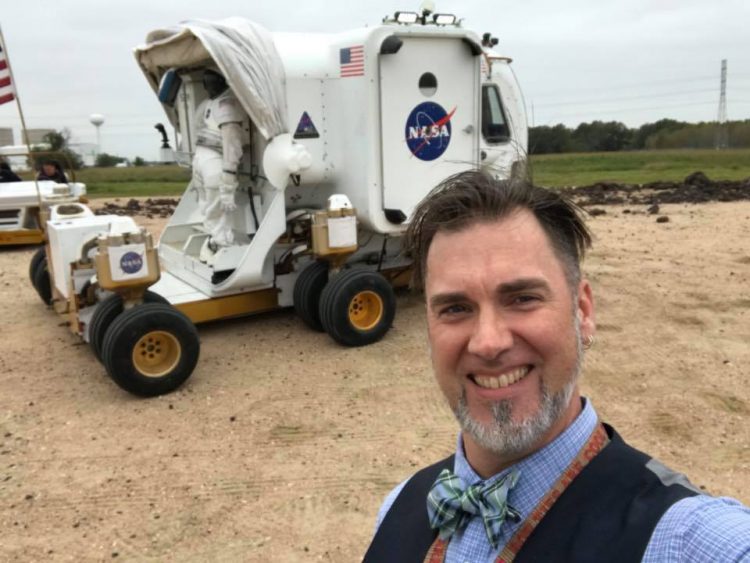
What do you enjoy most about your job?
S: I have gotten good at reaching students who have a different background than me. I enjoy using my own childhood experience to reach students. I’m open to learning the culture of the students in front of me so that I can reach them in a relevant way. I get to go all around the country and share those ideas with teachers and push them to understand, encourage them to drop their assumptions, and understand the culture in front of them to help the students use the things that they already know and are familiar with. They then use that to help understand bigger concepts and use those in a critical way, which comes back to that systems thinking, thinking in a broad, global way — which is thinking that I picked up in my master’s degree. It’s just a dream job. Amazingly, they pay me to do what I do.
Tell me about how your time as a MIPM student has contributed to your current work?
S: Absolutely. One of the activities that I created has students design a habitat for people to live in that is not here on Earth. I started this as a final project for my students in environmental science. I thought, what better way for them to show me that they understand the environment here than to create something for an environment that is not here. They had to think about things like how ecosystems work, the closed loops that we have as opposed to when we build an environment. When we build an environment, we tend to build open loops. You have energy input, something happens, and then there’s a waste product. You have to go back, whereas nature doesn’t work that way. And so having worked on my own community model in my MIPM program, it gave me a better understanding of all the activities I could put together. I take this activity all over the country and it challenges students to think when creating these habitats. When they do, they have to think about infrastructure, where the water is going to come from, where food is going to come from, where they are going to get energy, how they are going to communicate, and how they are going to take care of themselves when they get sick. It pushes students to think in a complete way about how those individual pieces have to work together and they have to work together themselves. I use the six infrastructure systems that we did in class — food, water, energy, public health, communication, and transportation — to create the groups that then work together. A lot of the time people who are working in the water group, figure out that water has to get from place to place and as they figure that out that they realize they could put in turbines to create energy, so they figure out they have to work with the energy people. It’s the same thing with food because if they grow food that’s going to make oxygen and the plants would scrub carbon dioxide both of which are good things. So they’re thinking about these things in a systematic way, the same way that I learned in my program at UW. The program also helped in understanding how the infrastructure of the different places I go affect the teachers and students who are there.
How do you make all students feel included in space and science work?
S: This is what I teach teachers, pretty specifically. To simplify, I would narrow it to three things:
ensure students feel heard and seen; ensure students understand how and why the curriculum is relevant to them; ensure that students believe the teacher/presenter cares about them and is invested in their success. There is an educational philosophy called either Culturally Responsive Teaching or Culturally Relevant Pedagogy (depending on which book you are reading). It’s based on the idea of using an individual student’s own culture to reach and engage them in their learning. While this can seem challenging if the teacher isn’t from the same culture as their students, coming from the “outside” can be a strength. No one can be expected to be an expert on every culture. So instead of walking in assuming expertise, the teacher prioritizes asking leading questions and creating opportunities for students to share their experiences. The teacher also has an onus to share their own (relevant and appropriate) stories and culture, both finding common ground and teaching students to appreciate and celebrate variety and diversity.
What’s something fun you’ve gotten to do while at NASA?
S: We had this wonderful hackathon where we had to design a chair that would work whether there was no gravity, partial gravity, or full gravity. So we had to be able to understand how all of those things work together in one design. I got to design a chair and my chair is going to the moon someday!
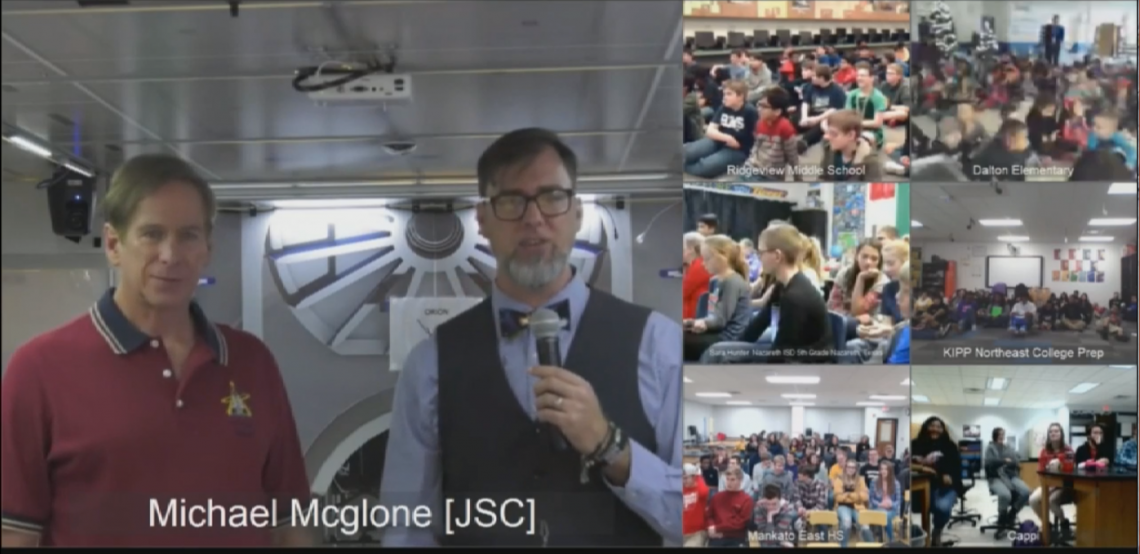
I’d love to know what’s your proudest moment or a project you’re most passionate about.
S: I think the thing I’m proudest of is that I got to deliver my first ever professional paper during my time in the program. Our head at the time, Dr. Barbara Endicott-Popovsky, believed in me enough, and my work, that she put her name on this paper with me and that meant everything. Getting to deliver it in front of a group of professionals and having it well received, really sparked in me the thing I love most which is speaking in public. And in large part, that’s what I do for NASA.
Did you have any key mentors or people who deeply influenced who you are, what you believe in, and what you’re committed to in your work and life?
S: The thing I liked about the program at UW was how there were several standout professors. Dr. Barbara Endicott-Popovsky who put her name on a paper with me, but also Bob Freitag. They just had this way of listening to the thing you had to say and then pushing you a little further so as not to accept mediocrity. Branden Born was another who would really listen to what I was thinking and then had that way of asking questions to get you to think more deeply.
The importance of role models in my life translates directly to my current work at NASA. Our last class of astronauts (2017) looks so much more like all of us. The class is half female, includes ridiculously qualified individuals who are Asian, Latinx, and Middle Eastern. They include glass ceiling breakers such as Kayla Barron, who was in the first class of US Navy submarine officers to include women. We have “Girls in STEM” and engineering programs that focus on showing young women and girls that science, technology, engineering, and mathematics are FOR them. NASA also has Employee Resource Groups (ERGs) that run the gamut across ethnic backgrounds, gender, sexual orientation, and more. These groups not only support the employees from those groups but do a tremendous amount of outreach as well.
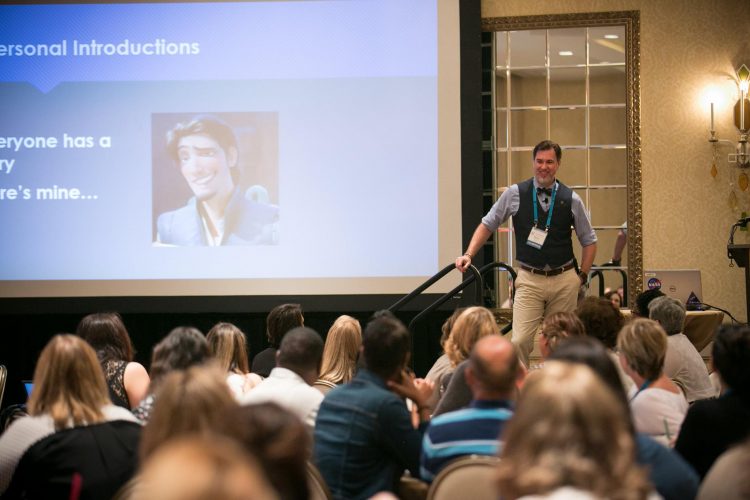
Can you tell me what’s next or what you’re working on with NASA?
S: I think where we are heading is even cooler than the golden age of NASA. In addition to the amazing work that we’re doing with our commercial partners, SpaceX and Boeing. NASA is pushing farther out into the universe. We are going back to the moon but,this time, not just to plant the flag. This time we’re going as partners with these countries in a sustainable way. We’re taking a lot of the things we’ve learned about sustainability, the kinds of things that we learn in the MIPM program — reusability, closed-looped systems, and how systems work together — so that these astronauts are going to be able to stay for weeks and months at a time.
So, I fully believe– and this is Steven, not NASA speaking now– that within the next decade you’re going to be able to go outside and look up at the moon on a new moon night and see lights shining back at you from human beings living and working on the moon.
My job in education, the coolest way I can think of to put it is that we’re going to Mars in the late 2030s and that astronaut who leaves the first footprint on Mars is sitting in a classroom somewhere. There’s a kid in middle or high school right now who is going to be that first person. And in a way, it’s my job to reach them.
Any final words of wisdom you’d like to share?
S: Here’s the one thing I share with most of the schools. In high school, my life imploded. My stepfather passed away, things went haywire at home. I ended up, in what should have been my senior year, getting kicked out of school basically for truancy because I stopped showing up. I was showing up for lunch and choir, but other than that, that was it. One afternoon, the vice principal said, look, if you miss one more time we’re going to kick you out. Of course, with the wisdom of youth, that was basically a dare to not come back, which is exactly what I did. I ended up going into the Navy and got my GED while I was in. I went from being the kid who had no high school background, couldn’t get it together to finish out senior year, to now having all of these certificates and degrees, getting to go to the University of Washington and be able to put that on my CV and I work for freaking NASA. Point A to Point B sometimes isn’t straight, and that’s okay. Just keep doing what you like, and don’t give up on yourself when that line isn’t going straight.
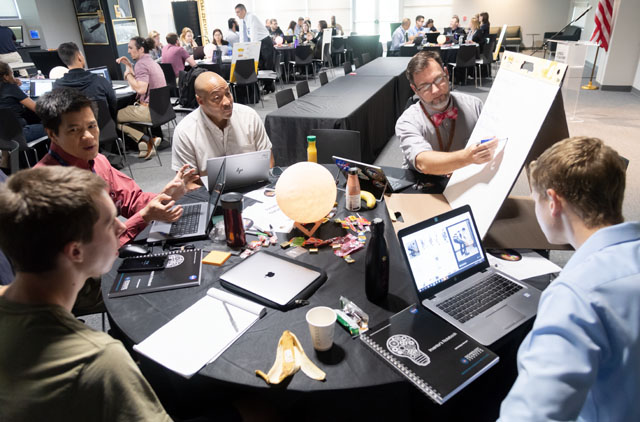
UDP Alum Paul Inghram to be honored as FAICP
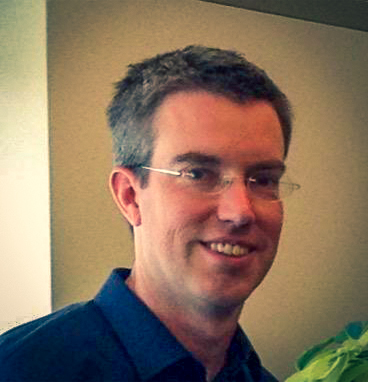
Recently, the American Institute of Certified Planners (AICP) accepted UW Urban Design & Planning alum Paul Inghram into the College of Fellows. The College of Fellows is one of the highest honors in the planning profession. Fellows of AICP are nominated and selected by their peers. The award recognizes outstanding contributions as a professional planner. Paul currently serves on the UDP Professionals Council. Over the course of his 15 year tenure, he has been a dedicated supporter of the Department. and h to provide mentorship to many students.
Ultimately, this exciting news comes during a challenging time. Covid-19 is impacting the way that communities work together to stay healthy and prevent further spread of the virus. In reflecting on being awarded this great honor, Paul touched on some of the concerns and challenges that planner face in the midst of a pandemic.
UDP: This is very exciting news! How does it feel to be selected to join the College of Fellows?
Paul: First of all, it is a great honor and I’m proud, humbled, and thankful to be so recognized. It’s something that I’ve dreamed of and worked towards for a long time. Obviously, this news comes at a time when the nearly hourly updates about coronavirus overwhelm our thoughts. The quickly changing news has been hard to keep up with. Moreover, the immediate effect on families that are suffering with the virus’ impact makes it clear that, while I’m grateful for the honor to be part of the College of Fellows, there are more important things in the world.
UDP: How do you foresee the Coronavirus impacting the planning profession?
Paul: Planners are in a funny place. We’re used to talking about significant issues like housing, homelessness, transportation, climate change, public health, and equity. These are topics that our communities care about and planning can make a difference. And now, in today’s moment, those issues take a backseat to the more pressing challenge of slowing the virus.
At my work, we’re trying to figure out how to keep moving forward even as many our elected leaders are preoccupied and won’t have space for working on planning for some time. We have a once in a decade plan adoption anticipated for the end of May at our annual meeting. Whether it occurs or not is now in jeopardy. The annual event usually draws several hundred people from around the region. We’re now quickly thinking of what our options are to hold a large, public meeting. What was meant to be a celebration of completing a plan that will be an example for the country may now need to be conducted online.
UDP: Are there also opportunities that might exist in this situation for planners?
Paul: This is requiring all of us to rethink how we plan. How do we talk with coworkers when we aren’t at work every day? How do we hold public meetings while maintaining separation between people? Can boards effectively engage in policy debates if they can’t meet in person? In the Seattle area, we’ve spent a lot of time preparing for the ‘big one,’ an earthquake that would disrupt business and make buildings unusable. Subsequently, that preparation is paying off as we use it and learn to adapt to our new virus world. Population growth isn’t likely to stop and planning issues won’t go away. Most importantly we now have to be creative about how to engage our communities and address these still important issues even if we can’t use traditional techniques.
UDP: Do you have any final thoughts to share about the nomination process and receiving this honor?
Paul: Above all, I want to thank my community of supporters. They gave me the confidence I needed get through the nomination process. I am also thankful for their encouragement throughout my career. They have inspired me to have faith in our communities, to aspire to a better future, and to work hard toward a greater good.
All about balance
How a hotshot firefighter manages a demanding career and the rigors of graduate school
There are just over 100 hotshot firefighter crews in the United States. They’re part of U.S. Forest Service’s elite firefighting team, a group of specially trained professionals that fight fire in some of the most extreme conditions. During fire season, they work an intense schedule, staying on-call for 16-hour days, for 14 days straight, for about six months a year.
In the off-season, hotshots work to keep up their endurance and stay fit. Some also choose to take on other challenges outside of firefighting. Will McKinney, for instances, is earning a master’s degree in Infrastructure Planning & Management from the University of Washington.
Becoming a Student
Will, who just finished his eleventh Hotshot season, says the MIPM program was a no brainer.
“I came to the realization that if I stay in firefighting, hotshot is [where I want to be],” Will shared. But it’s a really hard lifestyle and the physical labor made me realize I need something else – year round work. How can I use my fire experience so I can grow in another direction?”
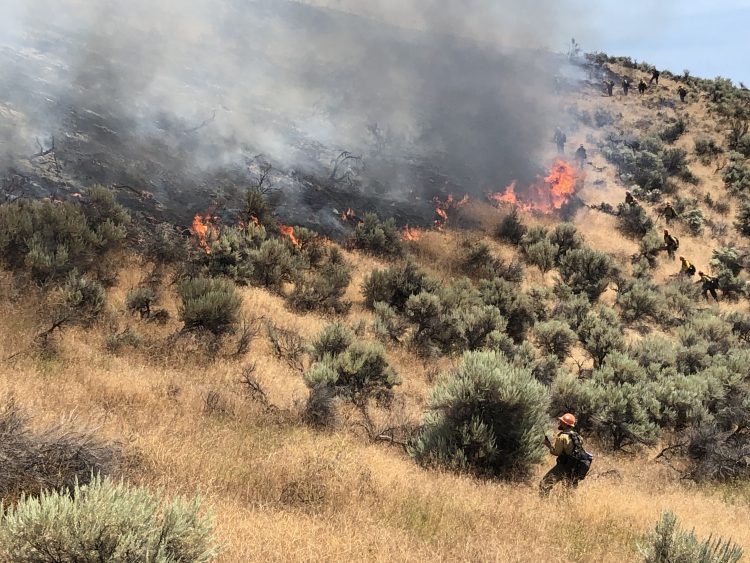
One of the biggest challenges for anyone balancing a career and school is finding time to study. It takes creativity and the right team to create a personalized plan. Part of the strength of the Department of Urban Design and Planning’s two-year, part-time, online graduate degree is the flexibility of the program. MIPM can often be tailored to the individual student, regardless of situation.
Will reached out to the department’s academic director, Wendy Freitag, before enrolling. He shared his job, schedule, and goals, and together, they came up with a way to customize the program so Will could earn his master’s.
Making it work
Fire season can be unpredictable. If it starts early or runs late, Will has to put his studies on hold, take an incomplete grade or work double-time to catch up. What’s more, there are no breaks in fires. Will says major fires are now back-to-back-to-back.
“‘Fire season’ is now a ‘fire year’ because there are so many big, destructive fires outside the season.”
Resources, including the number of firefighters available, are limited. That puts stress on crews and puts more land in danger. “We have fewer ‘slow’ years and we don’t have the resources to fight the more difficult fires.”
During fire season, Will keeps in touch with his professors and program administrators so they’re aware of his situation and whether he’ll be able to start classes on time. Will says the availability of UW’s faculty and staff, the ability to accommodate a non-traditional work schedule and the quality of education make UW’s program stand out among other online programs.
Joining the team
Will took the advice of a friend and got certified as a firefighter. He was drawn to a job that required physical fitness and teamwork. In 2006 he started firefighting on what’s called a Type 2 team. These teams focus on fire suppression and fuels management. It’s been go, go, go for Will ever since. “I applied; the next week I was working, and two days later, I was at a fire.” Soon after, he applied to be a hotshot.
The federal government established hotshot crews in the 1940s to fight fires in Southern California’s Cleveland and Angeles National Forests. The hotshot teams work in the hottest part of the wildfires. They are trained to handle the strategic and tactical aspects of firefighting.
Looking to the future
Will says he’s seen a lot of change in the time he’s been on the job. “The way we engage fire has completely changed. The old way was to put every fire out. Now, fire is so intense that we just can’t do that,” he explained. He says teams are looking at how they manage fire. They even use it as a tool through prescribed burns. This subsequently decreases the amount of underbrush and other material that feeds wildfires near communities.
“It’s not sustainable to put all the fires out. Some areas need fire so there’s less fuel, and when they do burn, it’s not so intense that we can’t put it out.”
Will hopes to combine this practical, hands-on experience with his master’s degree to build a future career. He says, “The cool thing about MIPM is that it exposes you to so many different realms. I haven’t decided which direction to go, but I want to use my knowledge of fire in some capacity along with what I’ve gotten from MIPM in planning.”
ADDITIONAL LINKS:
> To learn more about the Masters in Infrastructure Planning and Management Program (MIPM) program, visit the MIPM website.
LCY Bellevue Civic Center Project Wraps Up
Master of Urban Planning (MUP) Studios – Livable City Year, Bellevue
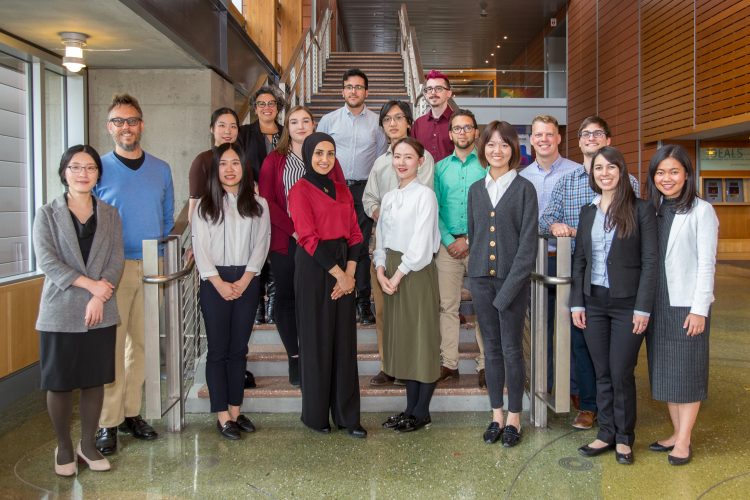
Recently, students of the LCY Bellevue Civic Center Vision Development studio released their final report. Led by Professor Branden Born, these planning students joined nearly 300 of their fellow classmates across UW during the 2018-19 academic year. Together they collaborated with City of Bellevue staff on various projects. Ultimately, the goal of this collaboration was to develop ideas that could help advance the City Council Vision document. Subsequently, many projects focused specifically around livability and sustainability.
Civic Center Vision Development Studio
This planning studio explicitly focused on exploring and refining concepts for a connected Civic Center. The site of the proposed Civic Center is centrally located. Its adjacent to Bellevue City Hall, the new East Link light rail station, and the Meydenbauer Center. Most importantly, the new Civic Center would function as a hub of community activity in Bellevue. Additionally, it would create a place of grounding and community connection in a space that presently lacks these qualities. Generally speaking, Bellevue’s downtown core was not built to correspond to human scale. One key goal of this studio was to create a public space created specifically to welcome people to Bellevue.
To begin with, students developed an analysis of the site. Next, they investigated case studies from around the world. Finally, they created different design alternatives to present to the City. The three student teams developed their designs with attention to one of three different core values:
- The first team focused on “Intimacy” and applied a green infrastructure lens
- Team two created a “Civic Home” with a focus on housing
- The third team developed a “Cultural Center” that developed economic potential on the site
The Final Report
In conclusion, the comprehensive report includes the student’s findings, and ultimately key recommendations for developing the site. These recommendations by and large propose innovative ways to fully integrated the Civic Center into the fabric of Bellevue’s downtown core. Ultimately, this plan will be used by the City to help generate new ideas and spark innovation around the possible future for this site..
CIVIC CENTER VISION DEVELOPMENT REPORT
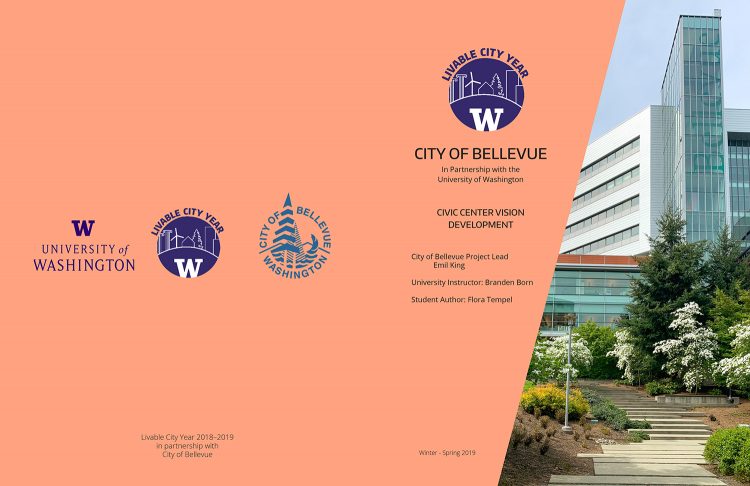
ADDITIONAL LINKS:
> To learn more about the Master of Urban Planning (MUP) program, visit the website here.
> To learn more about the Livable City Year (LCY) program, visit the LCY website.
“Making Local Impact”, June 2019
Livable City Year Blog
“Livable City Year concludes partnership with City of Bellevue”, February 7, 2020
Professionals Council Lecture – Mitchell Silver
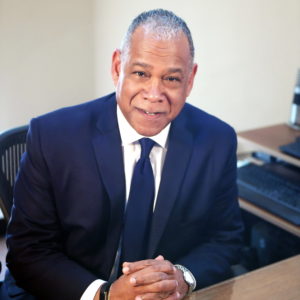
URBAN PLANNING & DESIGN PROFESSIONALS COUNCIL 2019 – 2020 LECTURE SERIES
Planning for People
Commissioner Mitchell Silver
New York City Department of Parks & Recreation
Lecture – January 29, 2020 | Architecture Hall, University of Washington Campus (Seattle)
On January 29, 2020 Commissioner Mitchell Silver joined the Department of Urban Design & Planning for the winter quarter Professionals Council lecture. He presented insights from his 30-year career as a professional planner and international leader on contemporary planning issues.
Commissioner Silver oversees management, planning and operations of nearly 30,000 acres of parkland for the New York City Department of Parks and Recreation. His lecture, entitled “Planning for People”, spoke to the importance of centering planning work, particularly in the public realm, around communities:
As the country urbanizes and demographics of the American population shifts, planning and urban design is gaining greater importance to attain public health, social interaction and equity. However, equity has emerged as the new buzzword in the past decade. What does equity mean for the planning profession and how can planners implement it in the work they do?
To answer this question, Commissioner Silver shared practical examples from New York City, Washington, D.C and Raleigh, NC to show how planners can create equitable, healthy and just communities.
Mitchell Silver – UW Department of Urban Design and Planning Lecture Series from UW College of Built Environments on Vimeo.
Professionals Council Lecture – William Riggs
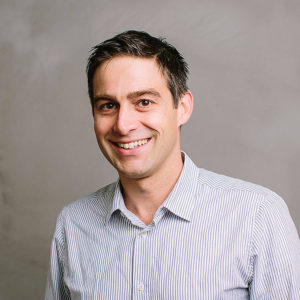
URBAN PLANNING & DESIGN PROFESSIONALS COUNCIL 2019 – 2020 LECTURE SERIES
Disruptive Transport
William Riggs
University of San Francisco
Lecture – November 20, 2019 | Architecture Hall, University of Washington Campus (Seattle)
Professor William Riggs joined the Department of Urban Design & Planning for the autumn quarter Professionals Council lecture. He spoke about the rise of shared and networked vehicles, autonomous vehicles, and other transportation technologies.
Currently, technological advancement is outpacing urban planning and policy. Professor Riggs discussed how these transformations can result in profound changes for cities. He also shared insights into how these changes can be used to catalyze a more livable, sustainable and socially just future.
William Riggs – UW Department of Urban Design and Planning Lecture Series from UW College of Built Environments on Vimeo.
